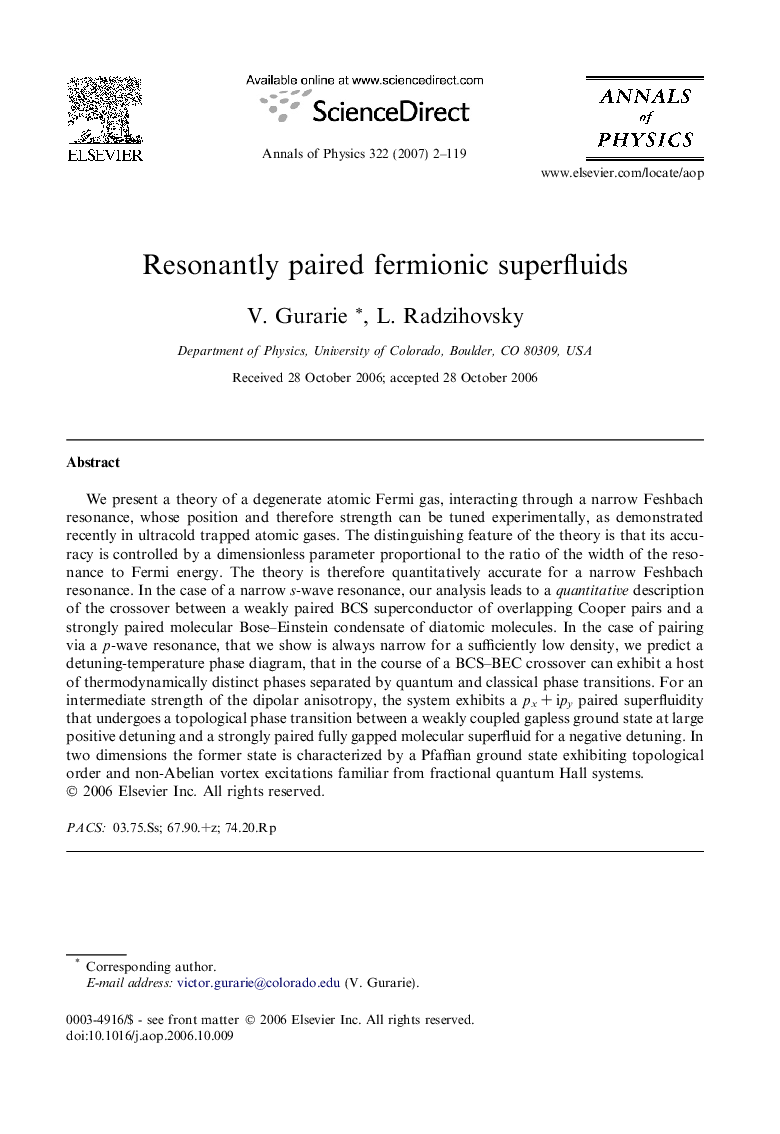| Article ID | Journal | Published Year | Pages | File Type |
|---|---|---|---|---|
| 1855403 | Annals of Physics | 2007 | 118 Pages |
We present a theory of a degenerate atomic Fermi gas, interacting through a narrow Feshbach resonance, whose position and therefore strength can be tuned experimentally, as demonstrated recently in ultracold trapped atomic gases. The distinguishing feature of the theory is that its accuracy is controlled by a dimensionless parameter proportional to the ratio of the width of the resonance to Fermi energy. The theory is therefore quantitatively accurate for a narrow Feshbach resonance. In the case of a narrow s-wave resonance, our analysis leads to a quantitative description of the crossover between a weakly paired BCS superconductor of overlapping Cooper pairs and a strongly paired molecular Bose–Einstein condensate of diatomic molecules. In the case of pairing via a p-wave resonance, that we show is always narrow for a sufficiently low density, we predict a detuning-temperature phase diagram, that in the course of a BCS–BEC crossover can exhibit a host of thermodynamically distinct phases separated by quantum and classical phase transitions. For an intermediate strength of the dipolar anisotropy, the system exhibits a px + ipy paired superfluidity that undergoes a topological phase transition between a weakly coupled gapless ground state at large positive detuning and a strongly paired fully gapped molecular superfluid for a negative detuning. In two dimensions the former state is characterized by a Pfaffian ground state exhibiting topological order and non-Abelian vortex excitations familiar from fractional quantum Hall systems.
